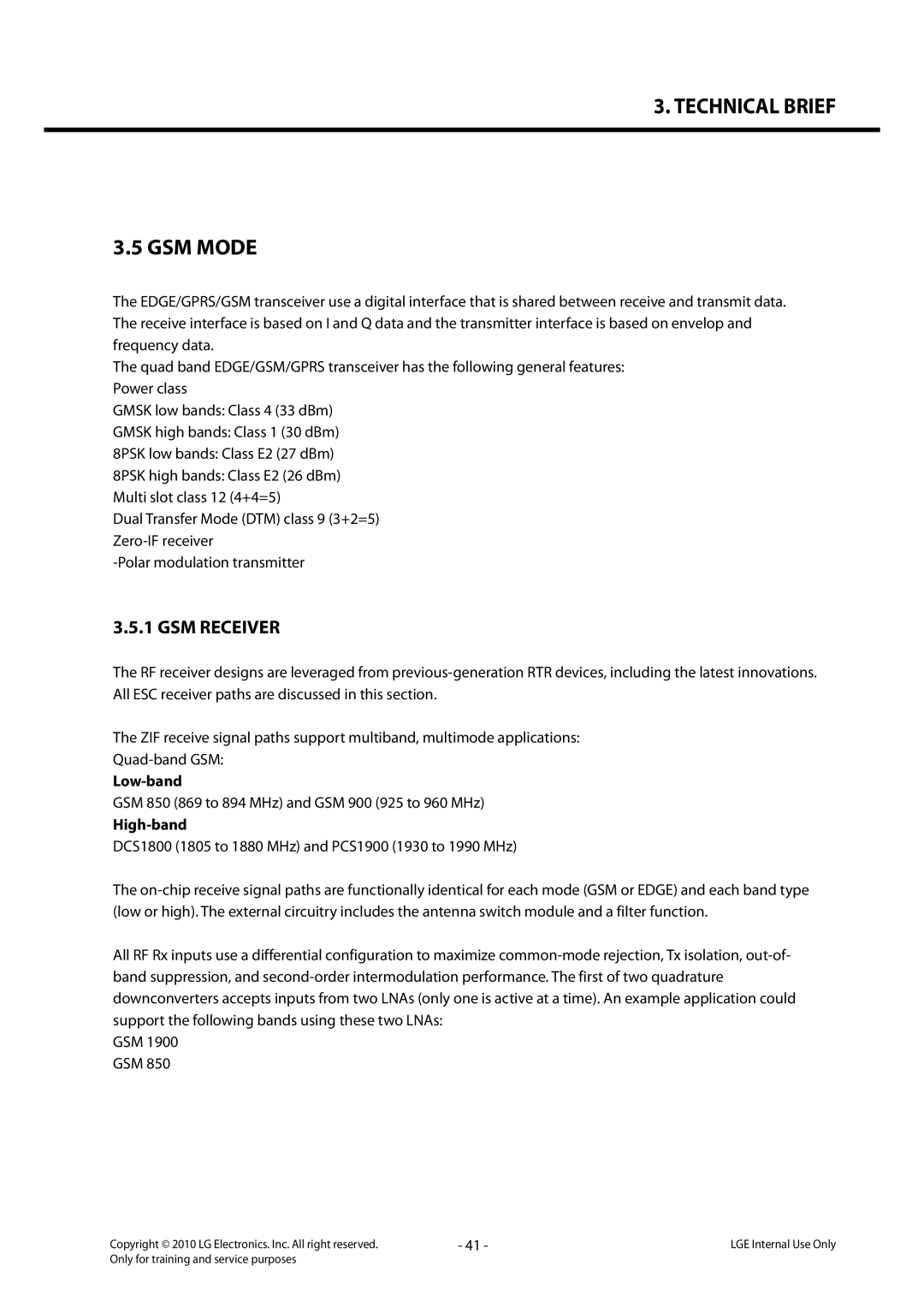3. TECHNICAL BRIEF
3.5 GSM MODE
The EDGE/GPRS/GSM transceiver use a digital interface that is shared between receive and transmit data. The receive interface is based on I and Q data and the transmitter interface is based on envelop and frequency data.
The quad band EDGE/GSM/GPRS transceiver has the following general features: Power class
GMSK low bands: Class 4 (33 dBm)
GMSK high bands: Class 1 (30 dBm)
8PSK low bands: Class E2 (27 dBm)
8PSK high bands: Class E2 (26 dBm) Multi slot class 12 (4+4=5)
Dual Transfer Mode (DTM) class 9 (3+2=5)
3.5.1 GSM RECEIVER
The RF receiver designs are leveraged from
The ZIF receive signal paths support multiband, multimode applications:
Low-band
GSM 850 (869 to 894 MHz) and GSM 900 (925 to 960 MHz)
High-band
DCS1800 (1805 to 1880 MHz) and PCS1900 (1930 to 1990 MHz)
The
All RF Rx inputs use a differential configuration to maximize
GSM 1900
GSM 850
Copyright © 2010 LG Electronics. Inc. All right reserved. | - 41 - | LGE Internal Use Only |
Only for training and service purposes |
|
|
